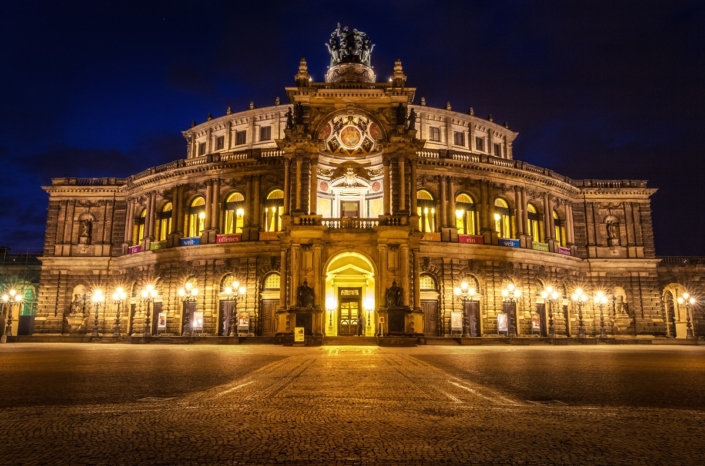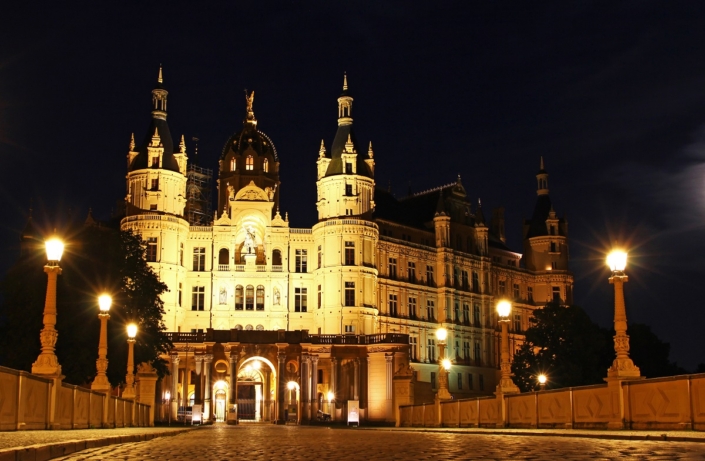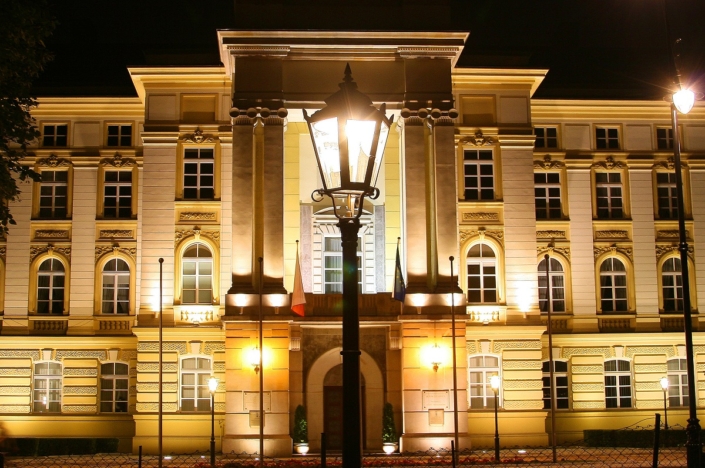Why us in streetlighting
The history of street lighting is a fascinating chapter in the development of urban infrastructures. Even in ancient times, the importance of illuminated paths for safety and public life was recognized. Antioch on the Orontes, one of the most important cities in ancient Syria, was known for its street lighting, which could even rival the brightness of day. This early system of lighting probably used simple oil lamps or torches placed at strategic points to bring light into the darkness.
In the Middle Ages, street lighting developed further, with the use of lamps that burned animal or vegetable oils. While these lighting methods were more effective than before, they had the disadvantage of requiring regular maintenance and posing a fire hazard. In the 16th century, larger cities in Europe began to implement more systematic forms of street lighting. In Leipzig, for example, man-height light pans were installed to illuminate the streets and squares. These pans had to be lit by the citizens themselves, showing that the responsibility for lighting often lay with the residents themselves.
However, the revolution in street lighting began in Paris in the 17th century under the reign of Louis XIV. The Sun King, known for his extensive urban planning measures, pushed for the installation of street lights to increase safety and improve control over nighttime activities. The introduction of pitch pans proved insufficient, and so on September 2, 1667, extensive lighting of Paris’s alleyways was introduced. The lanterns, mounted on the walls of houses or on special lampposts, were a great advance and greatly improved the nighttime cityscape.
The oil lamps used to illuminate the main streets in Paris at the end of the 17th century were another step in the evolution of urban lighting. This technology quickly spread throughout Europe, with cities such as London, Amsterdam and Berlin following the French example. The introduction of street lighting in these metropolises was not only a sign of progress and modernity, but also a means of ensuring nighttime safety and order.
The evolution of street lighting reflects the growing importance of the urban environment and the need to create safe and accessible public spaces. From the simple torches of antiquity to the sophisticated lighting systems of modern times, street lighting has played a key role in shaping cities and improving the quality of life of their inhabitants.
At the beginning of the 18th century, Dresden, Frankfurt am Main and Basel also introduced street lighting in 1721, and most of the other larger cities followed suit over the course of the century.
On November 3, 1731, the first so-called “city illumination” was installed in Munich. In the first few years, animal tallow was used as fuel, and in December 1850 the first 1,000 gas lanterns were installed in the old town.[9] Rapeseed oil and petroleum were also used in the 19th century. Rapeseed oil was used to illuminate entire streets despite its poor light output.[10] Petroleum lanterns were used in places without gasworks.
The development of street lighting is a fascinating chapter in the history of urban infrastructure, closely linked to the advancement of technology and urbanisation. In the 18th century, cities such as Dresden, Frankfurt am Main and Basel began to introduce street lighting, a move that revolutionised the nighttime cityscape and improved safety and social life after dark. The use of smoky candles in Munich in 1731 marked the beginning of a new era of urban illumination, which was further developed by the use of gas lamps in December 1850.
The use of rapeseed oil and kerosene in the 19th century testifies to the constant search for more efficient and brighter lighting methods. Although rapeseed oil was not particularly bright, its availability meant that it was used to light entire streets, while kerosene lamps offered an alternative in places without gas supplies. The founding of the Imperial Continental Gas Association in London in 1824 and the introduction of gas lighting in Dresden in 1828 show how international cooperation contributed to the spread of this technology.
Werner von Siemens’ innovations, especially the invention of the dynamo in 1866, ushered in a new era in which electrical energy could be used for lighting. This led to the installation of the first electric street lighting in Berlin in 1879, a milestone that paved the way for modern lighting technology. This historical development reflects not only human ingenuity, but also the desire to continuously improve the quality of life in urban areas.
By 1900, gaslight and electric light were the dominant methods of street lighting. Gaslight, with its warm, flickering glow, was widely used due to its availability at the time and the long experience of using it. Despite technological advances in electricity, gaslight remained the preferred choice in many towns and cities even after World War II.
The turning point came with the introduction of new light sources that promised more efficient and brighter lighting. Fluorescent lamps, which came on the market in the 1940s, offered better energy efficiency and a longer life than traditional light bulbs. In the decades that followed, they were replaced by mercury vapor and high-pressure sodium vapor lamps, which were even more efficient and powerful. These new technologies led to a gradual move away from gaslight, as they provided better lighting with lower running costs.
However, the switch to electric lighting did not happen overnight. Many cities adopted a gradual approach, fitting new or previously unlit streets with electric lanterns, while traditional gas lanterns were often retained in old city areas. This mix of old and new reflected the transition from the ancient to the modern world, demonstrating cities’ adaptability to new technologies while preserving a piece of history.
The future of street lighting
Lighting technology has evolved significantly over the years, and Germany has had an interesting journey in this regard. In the early 2000s, the proportion of traditional gas lights began to decline rapidly as they were replaced by more efficient lighting methods. Despite technological advances and the move towards more modern and energy efficient lighting systems such as LED, there is still an appreciation for the historical and cultural significance of gas lighting in Germany. In some cities, efforts are being made to ensure that at least some of the remaining gas lights are preserved, often as monuments or as part of conservation areas. These efforts reflect a deep understanding of the need to balance history and progress. The switch to LED technology is a clear example of Germany’s commitment to environmental friendliness and economic efficiency. LED lights not only offer a longer lifespan and lower maintenance costs, but also a significant reduction in energy consumption, leading to a reduction in CO2 emissions. This transition to LED is part of a larger trend in Germany that aims to increase energy efficiency and minimize environmental impact, while preserving the historic aesthetics that contribute to the charm and character of many German cities.
The future of street lighting will increasingly be shaped by smart LED technologies that enable efficient and environmentally friendly lighting. With the integration of motion sensors, these systems can respond intelligently to the presence of people or vehicles, thus saving energy by only shining the light brightly when it is needed. Automatic dimming is another advanced feature that reduces light intensity during times of lower activity or according to a set schedule, helping to further reduce electricity consumption. Dimming allows fine-tuned control of lighting levels, which not only saves energy but also minimizes light pollution and has a positive effect on the urban environment. In addition, the use of solar panels provides a sustainable energy source that reduces dependence on traditional power sources and lowers operating costs. These intelligent lighting systems are an essential part of modern smart city concepts and help improve the quality of life in urban areas while protecting the environment and increasing energy efficiency.
Would you like to write your own success story in streetlighting?




